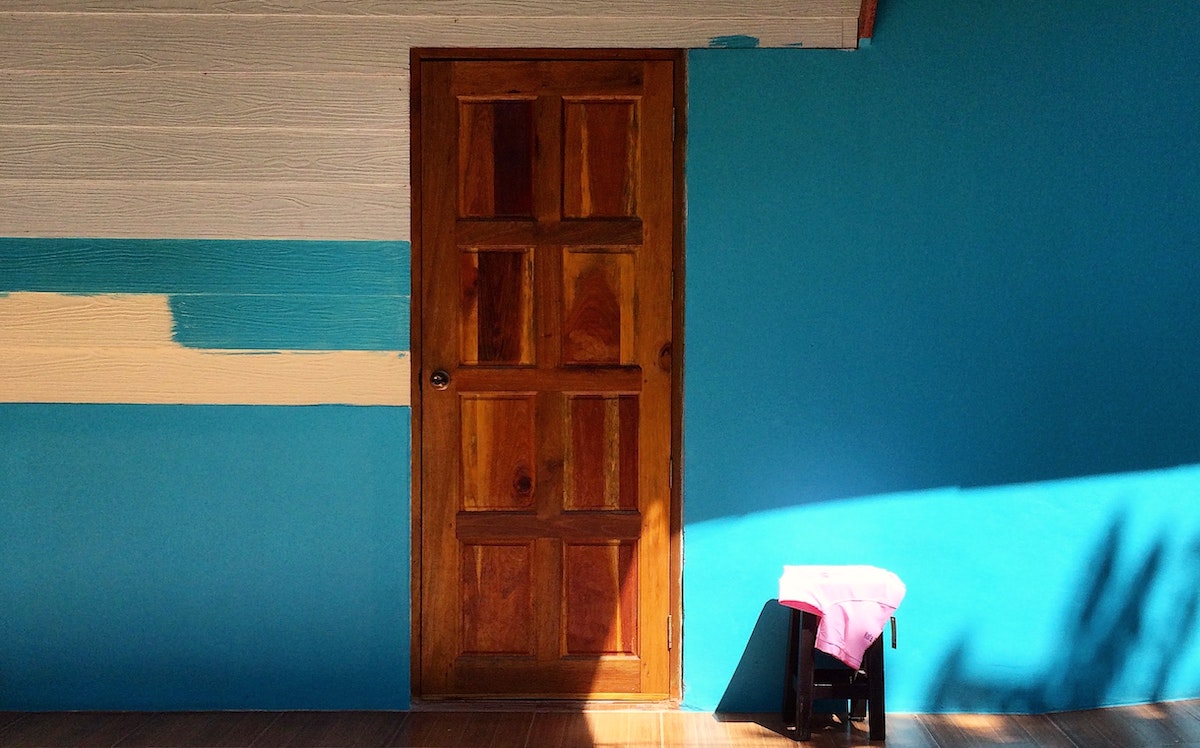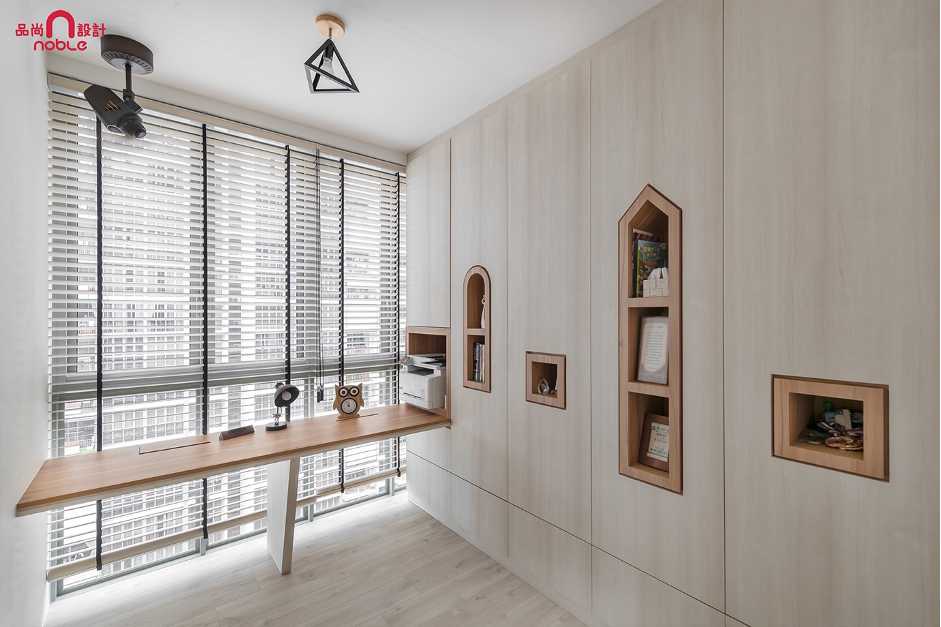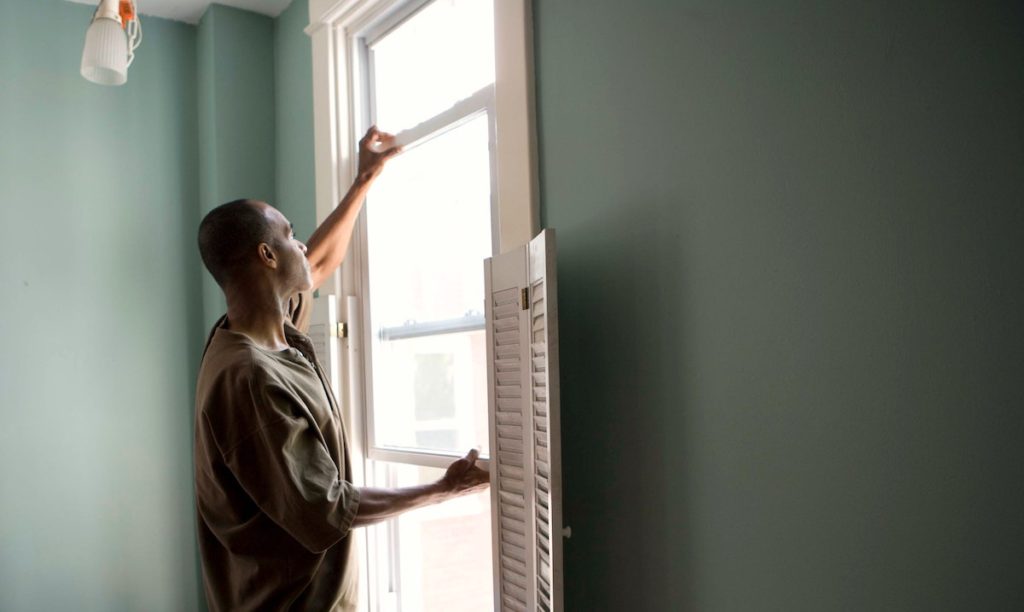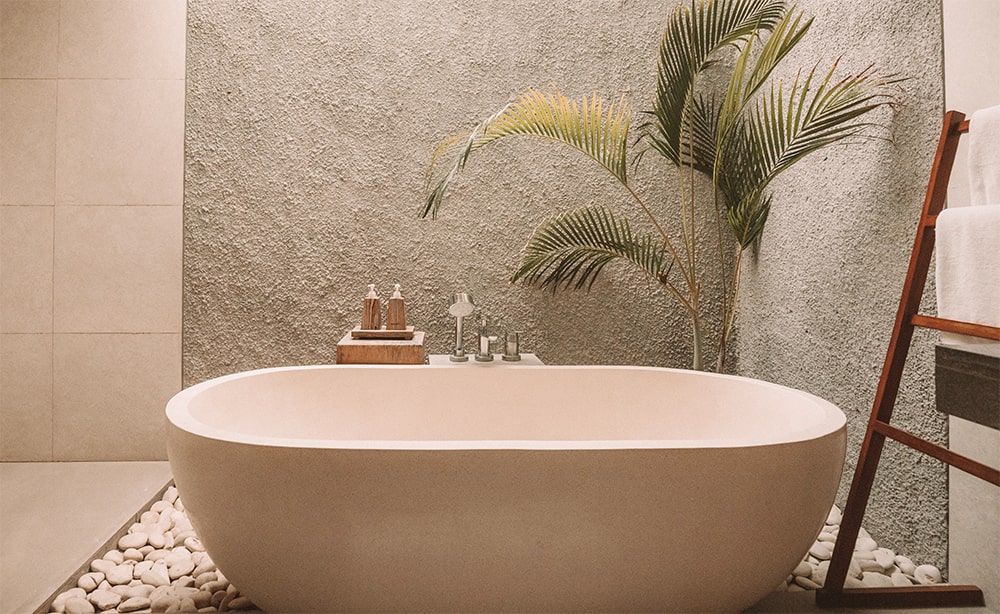
Looking to upgrade your home with a stylish timber door? You’ve come to the right place. Timber doors bring warmth and elegance to any space, whether it’s your main entrance or an interior door. Choosing the right company is key to getting the perfect door for your needs. Let’s explore some top timber door companies to help you find the best fit for your home with this Homees guide.
11 Best Timber Door Companies In Singapore (Our Top Picks)
Companies | Services | Address | Ratings |
Homees Concierge Service | Homees Concierge Service Team - tell us what you need and we'll help get it solved. Talk to us today by giving us a call or Whatsapp us now. | 994 Bendemeer #03-04 Singapore 339943 | Average Rating: 5/5 |
AT Aluminium | - Window Grill Installation | 39 Woodlands Close #01-16 Mega@Woodlands Singapore 737856 | Average Rating: 5/5 |
Gate Door Window | - HDB Gate Replacement | 19 Woodlands Industrial Park E1 #01-01 (Main Office) Pioneer Point | Average Rating: 5/5 |
SG Doors | - Door Installation | 5 Sungei Kadut Ave Singapore 729642 | Average Rating: 5/5 |
Laminate Door | - HDB Gate Replacement | Tradehub 21, 18 Boon Lay Way, #03-133 Singapore 609966 | Average Rating: 5/5 |
Go Digital Lock Pte Ltd | - Metal Gates Installation | 1 Tampines North Drive 3, #02-06 Singapore 5284999 | Average Rating: 5/5 |
Pang Giap | - Stairs & Railing Installation | No 9 Defu Lane 3 #01-10L Singapore 539441 | Average Rating: 5/5 |
Siong Door | - Door Hardware | 1072 Eunos Avenue 5 #01-170 Singapore 409751 | Average Rating: 5/5 |
Goodhill Doors | - HDB Gate Replacement | 9 Sungei Kadut Street 5 Singapore 728956 | Average Rating: 5/5 |
Central Aluminium & Glass Construction | - Metal Gates Installation | 132 Woodlands Industrial Park E5 Singapore 757853 | Average Rating: 5/5 |
Good Wood Doors & Joinery Works | - Door Hardware | Block 6 Lorong 8 Toa Payoh Industrial Park #01-1305 Singapore 319058 | Average Rating: 5/5 |
Wee Ping Aluminium Contractor | - Door Installation | Tampines North Drive 1 #07-23 T-Space Singapore 528559 | Average Rating: 5/5 |
Hire Timber Door Services In Singapore
View All Timber Door Companies
What is a timber door?
Perhaps, one of the oldest materials used for doors, timber, usually refers to the wood processed into beams and planks. In the USA and Canada, it’s also known as lumber.
It’s famous for various reasons, but mostly because it offers buyers classic appeal combined with security and excellent sound and heat insulation.
Ultimately, timber has been a preferred choice for doors for quite some time, and it’s still dominant in the door industry.
What’s the Difference between Timber and Wood?
People often use timber and wood interchangeably. Nevertheless, there’s a distinctive difference between the terms. As mentioned above, wood is the natural material from trees or other plants, while the timber is processed timber. Let’s take a more in-depth look:
Wood
Wood is the common name for the fibrous structural tissue of trees and woody plants. The natural material is rich in cellulose fibres, and the lignin gives it compression resistance.
For thousands of years, wood plays a significant role as a construction material. It also serves as a fuel and an essential component in the making of weapons, furniture, paper, and many others.
Wood is a renewable resource, and as such, it remains dominant in the furniture and construction industries.
Timber
Timber, also known as lumber (a term used in North America), is the byproduct of wood. It comes in various forms, mainly beams and planks. It’s widespread in all construction and furniture-making industries. Timber can be either rough-sawn or with a surface on one or more faces.
Typically, furniture manufacturers use rough timber as raw material. The primary preference is hardwoods, but there are some low-cost softwood species too. On the other hand, finished lumber usually employs softwoods like pine, fir, cedar, and others.
What are the advantages of timber doors?
Weather resistance
Wood has many qualities that have earned the material a reputation of functional, reusable, and versatile door components. However, the natural material has a problem with water absorption. No matter whether hardwood or softwood, its porous surface retains water, which eventually leads to “waterlogging”. This process can lead to erosion, degrading, bloating, and others.
Luckily, this issue has an easy solution – applying a sealant to keep the water out of the wood.
That’s why most timber doors have a weather-resistant coating. There’s a wide range of protective finishings that allow even the cheapest types of wood to transform into stylish and long-lasting doors.
Natural insulation
Just like wood, timber is a natural insulator, which can save you a lot of money on electricity bills. Thanks to its properties, you’ll have a significantly better temperature-retaining ratio in every room of your home. During the summer, timber doors help your home stay cool, while in winter, they keep the heat inside.
Durability
Contrary to popular belief, one of the timber’s most significant advantages is its robust structure and durability. Just like conventional wood, it’s easily repairable, and you don’t necessarily have to replace your timber door.
Timber is one of the most resilient materials in construction and furniture manufacture. That’s why timber doors are incredibly resistant to motion, which gives an additional sense of security.
Stylish look
Even though some people shy away from wood, this material has never gone out of style. Nothing can compare to the classic warm and authentic look of timber.
The current trends are rustic themes – stained and sealed wood, not necessarily painted. The result is a door that has its original grain and texture enhanced by staining.
Of course, all this is sealant-protected. Timber bi-fold doors offer a beautiful mix of Mid-century and modern style– a combination of multiple panels folding neatly onto each other to save you tons of space in your home. What better way to increase the value of your home?
Pricing
Arguably, the price is what always drives homeowners’ choices. So, it’s safe to say that it’s the most important thing when choosing doors unless you have no budget limitations.
Generally, wood is a relatively expensive commodity, especially wood doors. But with the wide selection of sizing, door style, and wood species, you’ll undoubtedly afford some type of timber doors. Moreover, most of the woods are relatively common and affordable, unless they are some sort of exotic or imported species.
Usually, the cost of installing Timber main doors ranges from $400 to $600, whereas for bedroom doors, it is around $200 to $350.
Easy workability
Unlike most of its rivals, timber requires minimal processing. Perhaps, the only difficult thing to do is to cut the wood to the size you need. This feature keeps the price significantly low compared to other materials like steel or aluminium. Besides, it’s reasonably lightweight, so the transportation costs are more economical too.
Longevity
Perhaps, applying various sealants and finishes to your timber doors has more than one benefit. One of the best things about it is that it prolongs the material’s life. With proper care, your timber door can last for a lifetime.
Customizable style
Furthermore, the effortless processing of the material makes it the perfect base for any style. You can order your timber doors in any shape and size.
With the availability of bespoke sizing options, it’s easy to replace your existing entryway no matter its size. In this aspect, timber and wood are quite easy to customize.
Moreover, there are endless timber door possibilities, all unique in their way. Unlike uPVC doors or composites, timber doors come in a wide range of colours, and repainting won’t require changing the entire panel.
Maintenance
In the past, timber doorways would require regular care to maintain their look and durability. Homeowners had to deal with constant varnishing, coating, and repainting, spending a considerable chunk of their time on their interior and exterior doors. Luckily, modern timber doors don’t suffer from the same problem, and you’d have to update yours around six years after you buy it.
Sustainability
Apart from its durability and aesthetic appeal, timber is a sustainable material that renews its tree population over time. What’s more, the natural material can undergo upcycling or recycling, which reduces the waste from using it to a minimum. Ultimately, recycled and upcycled products can be useful in a wide variety of furniture, décor, and other objects.
What are the types of Timber?
Just like wood, timber comes in two main categories – hardwoods and softwoods. Generally, lots of people consider the former as a preferable choice for doors, but conifers are also an affordable and quality alternative. They are an economical solution for homeowners on a budget.
Even though they aren’t as strong and durable as hardwoods, they can still do an excellent job for places with little traffic (closets, mudrooms, and others). Let’s take a look at some of the most common types of timber.
Pinewood
A popular softwood, pine is a fast-growing and easy-to-process material. Its variations are relatively soft, but it’s still a sturdy and shock-resistant material ideal for furniture and internal doors. What makes pine unique is the visible round grain that’s usually darker than the wood. Moreover, you’d love the constantly “evolving” country-like look of the material.
The main advantage of pine is that it’s affordable and requires minimal maintenance. Furthermore, it has excellent resistance properties, which makes it a suitable option for all kinds of furniture and construction.
Redwood
More known as a sequoia, this tall-standing tree provides pinkish-brown to intense reddish-brown hued material with excellent properties. It’s easy to modify it with simple machinery and hand tools. On top of that, redwood timber is very durable and resistant to moisture and decay, which makes it ideal for external doors.
Hemlock
Hemlock is an excellent low-cost softwood for those on a budget. Its main benefit is that it hardens over time, making it a cost-effective alternative to more expensive hardwoods like oak.
The species comes into two subcategories – Eastern and Western Hemlock. It provides excellent workability, and it’s a suitable material for paneled and beveled doorways.
The robust and weather-resistant characteristics make for a versatile material that can serve well both inside and outside.
Due to the lack of resin, hemlock is becoming an increasingly popular alternative to pine. Hemlock furniture and doors usually come unfinished, which allows homeowners to stain them to their liking.
Maple
Maple is a common material choice for interior and closet doors. There are two varieties – soft and hard, with the former providing relatively excellent workability.
Still, both species are more durable than others thanks to their straight and fine grain. Maple timber is inexpensive, and just like oak, it changes its hue over time.
Ashwood
Woodworkers often refer to ashwood as the “poor cousin” of oak. However, it’s a popular choice for lots of high-end furniture at homes and offices. It’s a sturdy and brilliant-looking option for veneering.
Moreover, it can easily absorb different stains. The biggest drawback is, perhaps, its market price. It has been rising due to the decrease in the supply of ashwood, especially in Europe.
Poplar
Considerably cheaper than other hardwoods like cherry and mahogany, poplar is a popular choice for the paint-grade application. This type of timber can come in different hues – from creamy-white to green, brown, and even purple.
The reason for this is that the material is prone to overexposure to light. Poplar may not be the most attractive option out there, but it can still make a statement with the proper finishing.
Bamboo
A bamboo door is something that would look a bit extraordinary in a traditional interior. Still, the fast-growing plant is an ideal alternative to tropical hardwoods. It’s available in many forms, ranging from pale yellow to gold in colour. Perhaps, the most promising building material, bamboo is an ideal choice for bi-fold or sliding closet doors.
Because of its strength, shock, and weather-resistant properties, bamboo is also a suitable material for external doors. But that’s a good idea only if you’re willing to pay a good chunk out of your budget and then take regular care of your front door.
Birch
There are many types of birch, but the most popular has to be the yellow birch. A source of hardwood timber, birch, allows easy crafting.
What’s more, the light-reddish brown hue of yellow birch is an inexpensive alternative to those on a budget. The material has many perks, such as extensive lifespan, durable, reliable, and heavyweight structure, and waterproof properties. However, it can quickly perish without proper care.
Cedar
Cedar doors are a must-have amenity for every practical homeowner. The classic light to dark reddish-brown cedar is a high-quality timber coming from different subspecies. Moreover, the lumber boasts impressive durability, paired with excellent looks. The aromatic shell of the western red cedar repels insects.
On top of that, it can efficiently deal with moisture and rot, which makes it perfect for external doors. Since it lacks excessive pitch and resin, cedar is favourable towards staining and finishing. This long-lasting and highly-durable species comes at a relatively moderate price compared to its rivals.
Cherry
Even though it can cost you a fortune, a cherry door instantly increases the curb appeal of your home. The hardwood boasts straight grain with medium density and moderate durability. Its colour ranges from pinkish-brown to dark reddish-brown. The best thing about cherry timber is that it develops a darker and richer patina over time.
Typically, solid cherry doors don’t have high insulating value, but some manufacturers offer customers insulation cores to the door panels, which can improve the quality of the entryway. All in all, cherry is ideal for a beautiful and reliable front door.
Mahogany
Mahogany has one of the most recognizable colours. The typical brown colour of the wood species gets darker with time. This timber is of high quality, and that’s why it’s commercially available in almost every continent.
For a moderate price, this material is ideal for an exterior door. It is exceptionally durable, sturdy, and hard to dent. Moreover, mahogany doors are resistant to pests and decay, and they typically last for a lifetime. This timber can bless any home with a long-lasting, elegant look.
Oak
Arguably, oak is among the most popular options in the timber door selection. The hardwood offers extreme value for its price – it’s durable, long-lasting, and has an attractive finish. One of the best things about oak timber is that it gets darker over time.
Moreover, it’s resistant to various threats like rot, decay, and preservative treatment. Because of its strength and resistance properties, white oak is generally suitable for external doors.
Walnut
Walnut is another premium-quality hardwood. Perhaps, this wood is the most renown for its decorative and design properties.
The classic brown timber allows for easy work, even though it doesn’t get to brag with the best durability and density. Because of its outstanding aesthetics, walnut is an expensive commodity, but it surely makes for some of the best interior doors. Other than that, it stains and finishes quite well to give a vivid highlight to the grain.
Fir
The standard choice for timber framing, firwood has been a valuable resource for doors and other furniture for the past decades. The signature straight grain of the wood has a reddish-brown tint to it, which makes it an elegant solution for a wide range of interior elements. The timber is robust and enduring and can retain its original shape and size during seasonal changes.
Alder
Similar to pine, the colour of alder wood usually varies from pale-pinkish brown to darker shades of reddish-brown. Of course, it turns yellow and darkens after some time of exposure to the sun.
Alder classifies it as one of the softer hardwoods, which makes it somehow prone to scratching and denting.
Also, alder exterior doors are slightly less resistant to severe and humid weather conditions. They require extensive protection and care to prevent decay. Luckily, this timber has exceptional stain properties, so it might be a good idea to take advantage and give your alder door a more expensive, mahogany finish.
What are the common timber door styles?
Panelled doors
Typically, most timber door manufacturers offer a wide range of bespoke options to their customers. Panelled doors are among the popular choices, as they are highly available, provide an attractive look with their carved designs, and are generally low cost. Moreover, they are suitable for both internal and external applications.
These doorways, classified as raised or flat panels, come in endless panel variations and styles. The decent all-around properties combine great weather and soundproof features with elegance and natural beauty. For this reason, panel doors are suitable for master bedrooms as well as front doors.
Boarded doors
Boarded doors are not the typical doorway style of the modern home. They are ideal for classic Mid-century or country-style homes where they can serve as focal points complemented by the rest of the interior décor.
Manufacturers produce contemporary models in either horizontal or vertical designs. Some of them offer beaded glazed apertures as an addition to individual door models.
As for the construction, such doors usually come in 45 millimetres thick and 95 millimetres (minimum) wide stiles and top rails along with a concealed middle track.
There’s also a concealed bottom rail for vertically boarded doors. In their essence, the boards are stable, tongued, and grooved with joints. Finally, buyers can order them non-rated or with a fire-resistance rating.
Glazed doors
These types of doors have garnered lots of popularity in recent years. Even though some consider them to be an inferior alternative to steel and wood, they can even outperform their counterparts in some aspects.
Glazed doors are genuinely creative, mainly if used as patio doors for the perfect backyard view. The most popular models are sliding glazed doors and hinged glazed doors.
Contrary to popular belief, glazed doors have excellent thermal efficiency value, which makes them suitable external door options. Therefore, double or triple-glazed hinged models are ideal for front doors. Still, you can bet on a more familiar pick with a decorative element – an entrance door with a stained glass insert.
To add maximum light to the indoors, installing a sliding glazed door with a timber frame can do wonders. Such a door can unite your garden or yard into an opening visual space. Moreover, it can save you tons of space since the sliding mechanism doesn’t swing to open and close.
Louvred doors
Louvre or louvred doors are the ideal solutions for places where there’s a need for privacy and ventilation at the same time.
These doors come in various elegant styles in glass, plywood, or timber. Even though they may not be a suitable option for all parts of a home, they are ideal for wardrobes, cabinets, bathrooms, mudrooms, utility rooms, and others.
In terms of variations, they can be either movable or fixed. The former can move when connected to the pivot via hinges. Timber louvred doors can deliver an outstanding and unique appeal to your interior, but they are generally hard to clean and can’t protect the home from flying insects.
Bi-fold doors
If you are into space-saving alternatives to conventional entryways, bi-fold doors are the champions in this category.
They fold back neatly, making the most of the available floor space and creating a seamless link between the interior and exterior.
They are versatile and can employ multiple panels, which makes them ideal for both patio and interior doors. Of course, their most significant advantage is serving as closet doors or room dividers.
French doors
The timeless look of French style doors can mesmerize even the most critical guests. These types of access points are significant and bound to make a statement.
However, they are suitable mainly for large spaces. Most manufacturers offer bespoke French doors according to the customer’s specifications. All this comes with a wide range of material choices for a truly luxurious look. There are also options for open-in or open-out configurations.
Accoya doors
Accoya is a relatively unknown modified timber harvested from the Radiata Pine. Its incredible properties come from the acetylation process conducted during its manufacture.
Surprisingly, it allows the product to resist rot and become even more robust and weather-resistant. It’s the ideal door material for homeowners looking to get value for their money. Accoya doors are usually friendly to all kinds of application – decking, cladding, and others.
Fire-rated doors are an essential safety feature in many homes and commercial spaces, as they can help prevent the spread of fire and protect people and property. If you’re in need of a fire-rated door, it’s important to work with a reputable and experienced timber door company.
Cost of Other Home Improvement Areas
You can check out the cost of hiring professionals for other aspects of your home improvement project. Some of the general cost guides can be found below:
We’re here to improve your home
Speak to hundreds of reliable pros, view their gallery, inspirations, and know the best prices with our resources.
Have full control over your home improvement projects with Homees.





